How Do Hippos Breathe Underwater? (Real Answer)
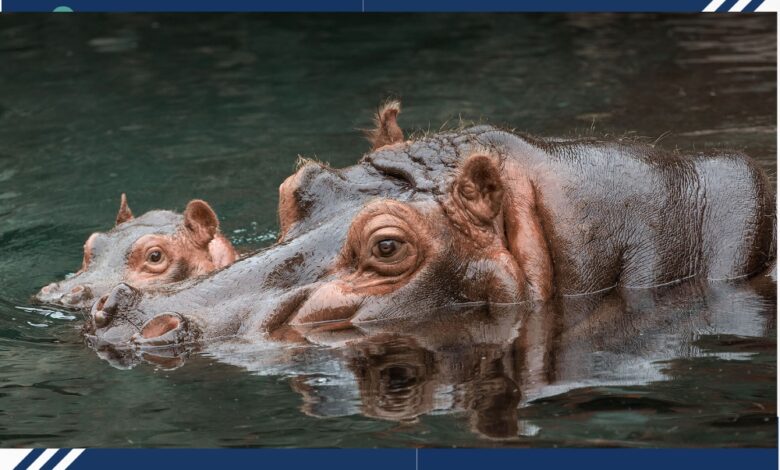
How Do Hippos Breathe Underwater? (Real Answer)
Hippopotamuses, massive animals often immersed in water, spend a significant portion of their day submerged, including their mouths. Despite being mammals, they don’t breathe underwater. Instead, hippos utilize their ability to take deep breaths, holding them for extended periods—sometimes five minutes or more. Remarkably, they can even surface for air while sleeping without waking. When not fully submerged, hippos breathe through their nostrils, strategically located on the top of their heads alongside their ears and eyes.
How Hippos Can Hold Their Breath For Five Minutes
As mammals, hippos rely on their lungs for oxygen and cannot breathe underwater. However, their ability to spend extensive time in the water involves a combination of adaptations in their respiratory, visual, and nostril functions. With the capacity to hold their breath for five minutes or more, hippos employ a unique mechanism where their nostrils completely close while submerged, preventing water entry into their lungs.
Additionally, a transparent membrane over their eyes enables safe underwater vision. Although hippos do not breathe underwater, they possess an evolutionary reflex that allows them to surface without waking up, take necessary breaths, and seamlessly return beneath the water’s surface.
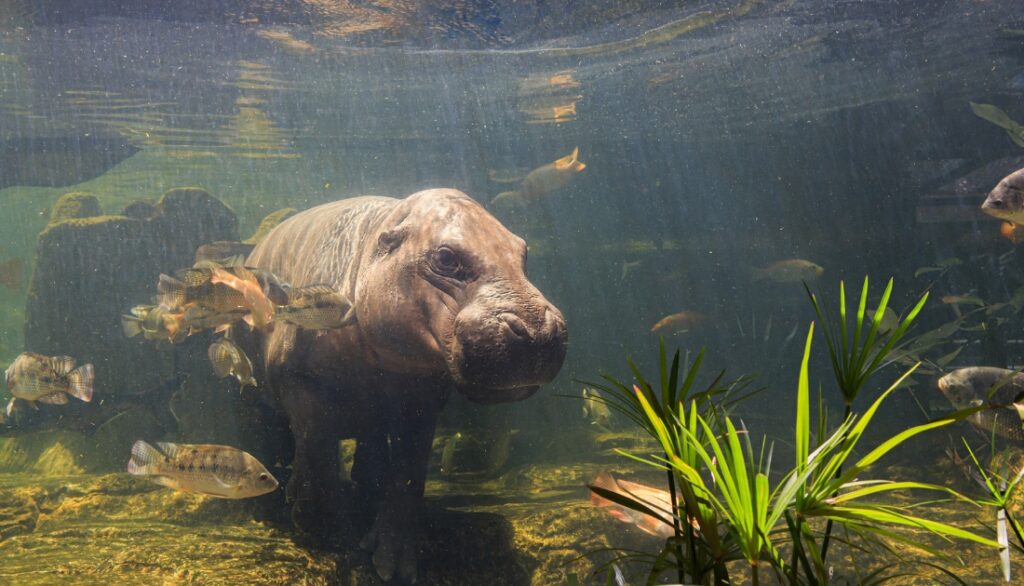
What Duration Do Hippos Typically Stay underwater?
Since hippos don’t possess the ability to breathe underwater, they aren’t amphibious creatures. Instead, they fall into the category of “semi-aquatic” mammals due to their extensive time spent in water. This behavior is partly influenced by the hot and arid conditions of their native sub-Saharan African habitat, where temperatures can soar above 100°F (40.5°C) during the hottest periods and seldom dip below 60°F (15.5°C) even in winter.
Hippos inhabit lower elevations in wetlands, lakes, and slow-moving rivers, typically found in warmer regions compared to mountainous areas. The landscape is characterized by open spaces with limited tree coverage, exposing hippos to more sunlight. To regulate their body temperature in these warm environments, hippos opt to stay in the water, either partially or fully submerged, for as much as 16 hours a day.
During daylight hours, hippos are often observed standing on shallow banks or wallowing in deep mud to cool off. They emerge from the water after sunset to engage in their primary activity – eating. Hippos graze for approximately six hours, consuming around one to one-and-a-half percent of their considerable body weight.
Mature male hippos, weighing between 3,500 to 9,920 pounds (1,600-4,500 kg) and measuring over ten feet in length, face the challenge of managing their large bodies. To conserve energy, hippos are generally inactive when not eating. Despite their sedentary periods, they may have to cover considerable distances, sometimes miles, in search of their preferred diet of short grass and fallen fruit.
Nighttime becomes a crucial period for hippos as they tirelessly forage for food. Even after a night of feeding, they return to the water by daybreak, seeking refuge from the heat and sunlight to maintain their preferred aquatic lifestyle.
Hippos Special Adaptations For Water
Buoyant Bodies:
Hippos possess a streamlined body shape, aiding buoyancy and facilitating efficient movement through water.
Nostril Control:
Specialized nostrils close tightly underwater, preventing water from entering their respiratory passages.
Transparent Eyelids:
Clear membranes over their eyes enable vision while submerged, allowing hippos to navigate underwater environments.
Temperature Regulation:
To combat the heat in their native habitats, hippos spend extensive time submerged, utilizing water as a natural cooling mechanism.
Submerged Rest:
Hippos exhibit an ability to rest partially or fully submerged, conserving energy during their prolonged periods in the water.
Wallowing Behavior:
Wallowing in mud not only aids in cooling but also acts as a protective measure against sun exposure and parasites.
Nighttime Foraging:
Adapting to their environment, hippos feed during the cooler nighttime hours, minimizing exposure to daytime heat.
Extended Breath-Holding:
Hippos can hold their breath for extended periods, often up to five minutes or more, enhancing their underwater endurance.
Semi-Aquatic Lifestyle:
As “semi-aquatic” mammals, hippos have evolved to thrive in both aquatic and terrestrial environments, striking a balance between the two.
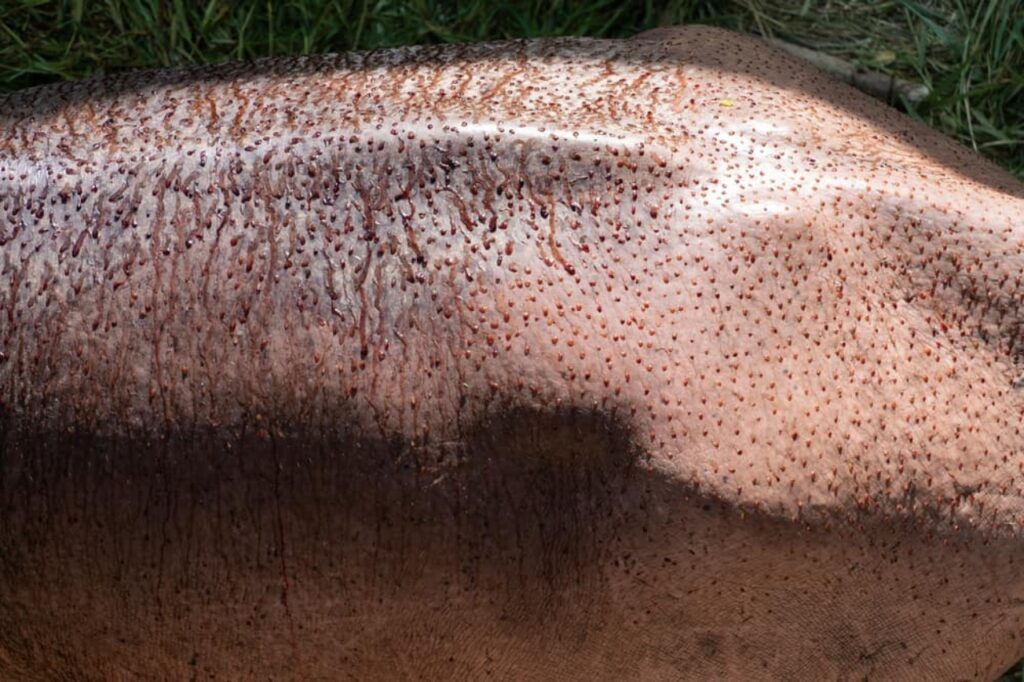
Hippos Don’t Have Normal Sweat (Unique Cooling Mechanisms)
Hippos prioritize staying out of the sun more than many animals due to the absence of conventional sweat glands. Instead, they produce a dense red fluid from their inner skin layer. Despite misconceptions labeling it as blood, this “blood sweat” serves as a sunblock, shielding the hippo’s sensitive skin from the sun’s harsh rays. Beyond sun protection, this unique secretion also acts as a defense against infections, allowing hippos to spend prolonged periods in potentially contaminated water without experiencing a higher infection rate compared to other animals.
Can Hippos Swim?
Despite their extensive time in water, hippos lack the ability to swim or float, primarily due to the density of their bodies. Instead, they prefer shallow waters. When navigating underwater, hippos rely on walking along the riverbed, utilizing a distinctive bouncing gait. Their toes are webbed, aiding in propulsion and facilitating movement through the water.
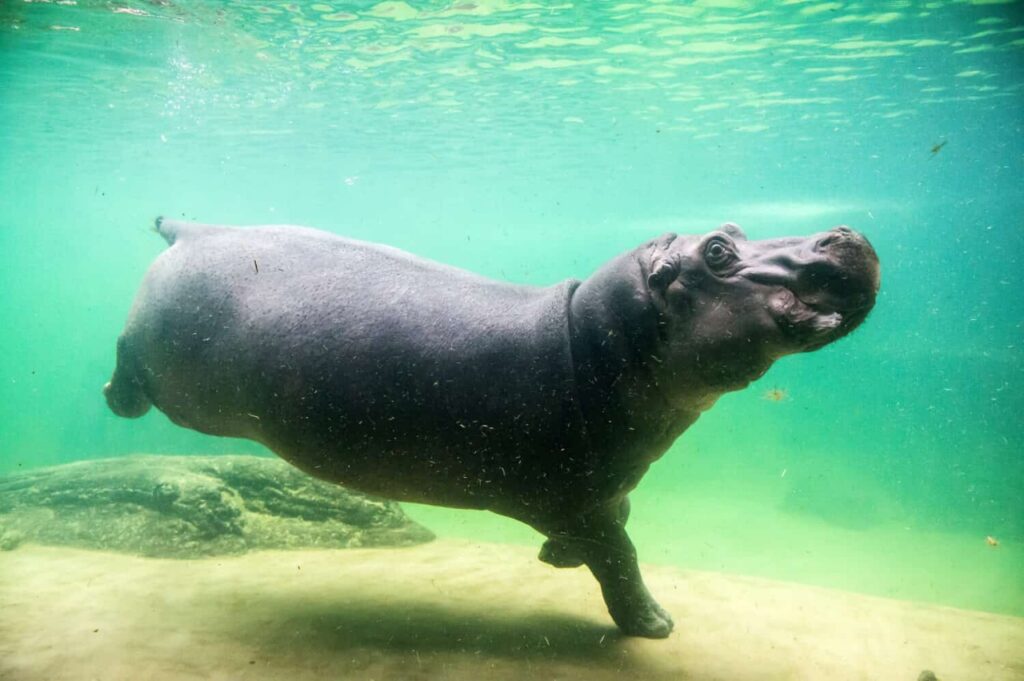
Risks Faced by Hippos in Water
While herbivorous by nature, hippos exhibit remarkable aggression, particularly when safeguarding their young. In 2020 alone, Lake Naivasha witnessed 40 attacks, resulting in 14 fatalities, showcasing the potential danger these creatures pose to humans.
Experts estimate that annual hippo attacks may claim up to 500 lives, although conclusive data remains elusive. Equipped with formidable incisors and canines that continuously grow, hippos employ these weapons in fierce confrontations.
Despite their formidable defenses, hippos are not without vulnerabilities. Young hippos face risks from predators that typically avoid full-grown adults. Cunning crocodiles may target juvenile hippos, while even a group of lions may seize an opportunity to prey on a young hippo at the water’s edge. The seemingly invincible hippos thus navigate a complex web of dangers, not only from external threats but also from their own formidable nature.
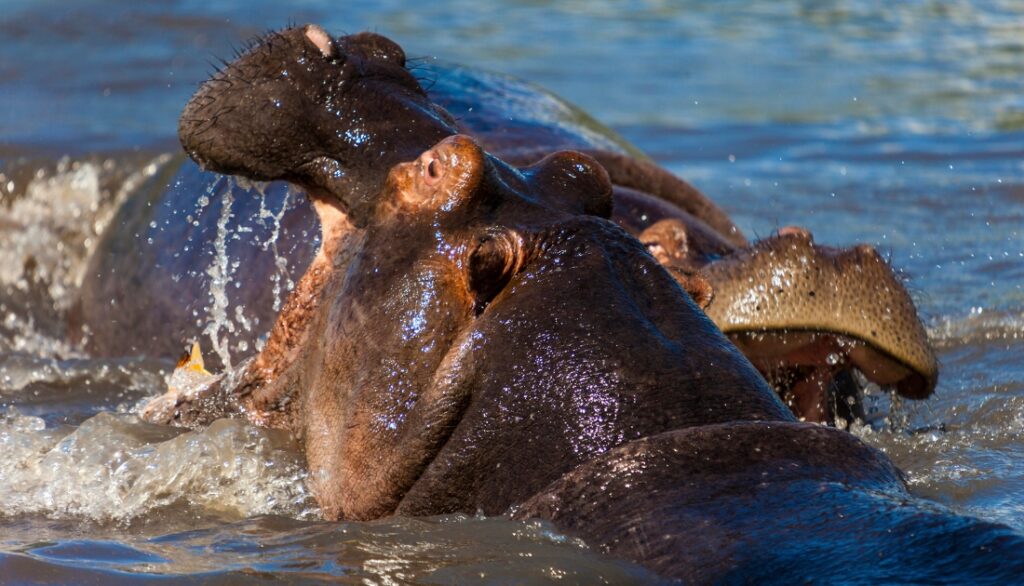
The protective nature of hippos, especially towards their young, is a driving force behind their tendency to form large groups called pods or sieges. These social structures can accommodate up to 200 hippos, with an average size around 40 individuals.
In the process of safeguarding their domain, male hippos inadvertently contribute to real problems, occasionally resulting in injuries or fatalities among their own kind.
Conclusion
Similar to all mammals, hippos depend on atmospheric oxygen for respiration and cannot breathe underwater like fish or amphibians. Despite this limitation, hippos boast special adaptations for an aquatic lifestyle.
With the ability to hold their breath for extended periods, hippos can even surface for air while asleep. Placing their eyes, ears, and noses atop their heads enables them to observe their surroundings while submerged in the water.
These adaptations are crucial as hippos rely on water to regulate their body temperature. Their sensitive skin, prone to sun exposure, lacks conventional sweat glands. Submerging themselves in water helps maintain skin moisture and effectively cools their bodies, emphasizing the significance of their unique aquatic adaptations.




